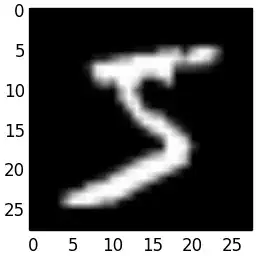$C$ is not normal distributed unless $A$ and $B$ are identically distributed. If $A$ and $B$ are identically distributed, however, $C$ will also be identically distributed.
Proof
Let $F_A$, $F_B$ and $F_C$ be the cumulative distribution functions (CDFs) of A, B and C, respectively, and $f_A$, $f_B$ and $f_C$ their probability density functions (PDFs), i.e.
$$\begin{array}{l}
F_A(x) = \Pr(A < x), \\
F_B(x) = \Pr(B < x), \\
F_C(x) = \Pr(C < x), \\
f_A(x) = \frac{d}{dx}F_A(x), \\
f_B(x) = \frac{d}{dx}F_B(x),\text{ and} \\
f_C(x) = \frac{d}{dx}F_C(x).
\end{array}$$
We also have two events:
- $\Gamma_1$, which is when $C$ is defined as $A$, which occurs with probability $\gamma$
- $\Gamma_2$, which is when $C$ is defined as $B$, which occurs with probability $1 - \gamma$
According to the law of total probability,
$$\begin{array}{rl}
F_C(x) \!\!\!\! & = Pr(C < x)\\
& = \Pr(C < x\ |\ \Gamma_1 )\Pr(\Gamma_1) + \Pr(C < x\ |\ \Gamma_2 )\Pr(\Gamma_2) \\
& = \Pr(A < x)\Pr(\Gamma_1) + \Pr(B < x)\Pr(\Gamma_2)\\
& = \gamma F_A(x) + (1 - \gamma) F_B(x).
\end{array}$$
Therefore,
$$\begin{array}{rl}
f_C(x) \!\!\!\! & = \frac{d}{dx} F_C(x)\\
& = \frac{d}{dx}(\gamma F_A(x) + (1 - \gamma) F_B(x)) \\
& = \gamma\left(\frac{d}{dx} F_A(x)\right) + (1 - \gamma) \left(\frac{d}{dx}F_B(x)\right) \\
& = \gamma f_A(x) + (1 - \gamma) f_B(x),
\end{array}$$
and since $\gamma = 0.5,$
$$f_C(x) = 0.5 f_A(x) + 0.5 f_B(x).$$
Also, since the PDF of a normal distribution is a positive Gaussian function, and the sum of two possitive Gaussian functions is a positive Gaussian function if and only if the two Gaussian functions are linearly dependent, $C$ is normally distributed if and only if $A$ and $B$ are identically distributed.
If $A$ and $B$ are identically distributed, $f_A(x) = f_B(x) = f_C(x)$, so $C$ will also be identically distributed.
